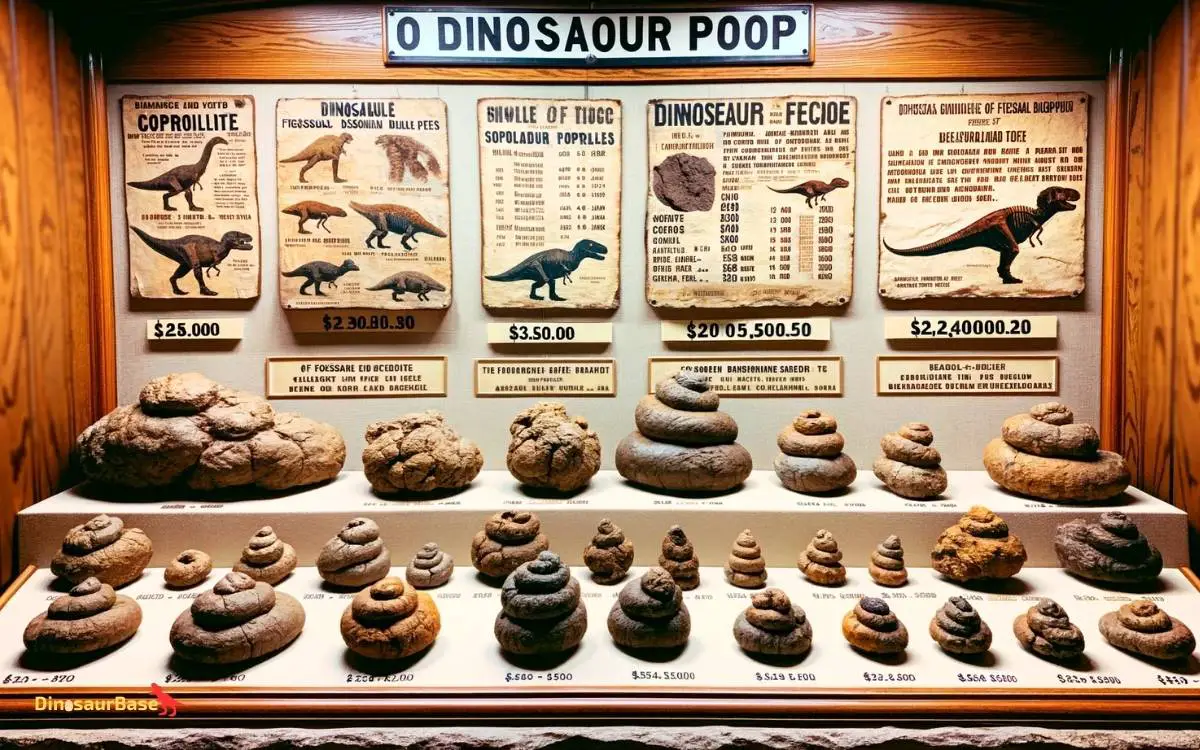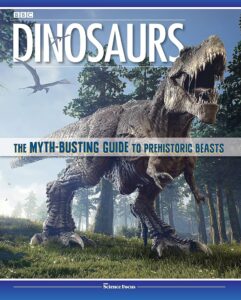Discover Which Dinosaur Had 15 Horns: A Complete Identification Guide
The dinosaur known for having 15 horns is the Kosmoceratops. This ceratopsian species was remarkable for its ornate skull.
Discover the unique world of dinosaurs with our detailed identification guide spotlighting the Kosmoceratops, a late Cretaceous marvel.
Unearth how this relatively newly discovered dinosaur, named in 2010, stood out with its impressive array of horns and what these features tell us about its lifestyle.
Delve into the ecological role this herbivore played within its ancient habitat. Enthusiasts and paleontologists alike are captivated by the distinctive frill and the purpose of its numerous horns – traits that continue to spawn intriguing hypotheses and discussions in the scientific community.
Explore our comprehensive insights into this prehistoric creature and understand the significance of its horned display in the rich tapestry of dinosaur evolution.

Unearthing The Horned Dinosaurs
Did you know some dinosaurs were like unicorns? Yes, they had horns! But these creatures were much bigger and had even more horns.
Such ‘horned dinosaurs’ are an incredible part of our planet’s history. Let’s dig into their world and discover which one had a staggering 15 horns on its head.
Characteristics Of Ceratopsians
Ceratopsians, or horned dinosaurs, were a group of large, plant-eating dinosaurs. They roamed the earth for millions of years. What made them stand out? Their impressive headgear.
- Triceratops: The most famous with three horns.
- Kosmoceratops: It takes the crown with about 15 horns!
These dinosaurs had beaks like parrots, robust bodies, and strong legs. They could weigh as much as 12,000 pounds. Imagine a living tank with horns!
The Role Of Horns In Dinosaur Life
What were these horns for? Researchers suggest several uses:
- Protection: Horns could defend against predators.
- Mating: Dinosaurs may have used them to attract mates.
- Combat: They likely fought rivals with their horns.
Each horned dinosaur had a unique look. This helped them to stand out in their herds. The Kosmoceratops had the most horns. They were the ‘rock stars’ of the ceratopsian family!

Credit: www.amazon.com
The Spectacular Fifteen-horned Dinosaur
Dinosaurs roamed the Earth millions of years ago. Each had unique features. Among them was a magnificent creature.
This dinosaur boasted an astonishing fifteen horns. In this post, we unveil the identity of this remarkable being and explore its fascinating traits. Prepare to journey back in time, to when the Kosmoceratops richardsoni walked the land.
Kosmoceratops Richardsoni: A Unique Discovery
Kosmoceratops richardsoni emerged from the ancient rock beds. It stunned scientists worldwide.
This dinosaur held a secret – a head crowned with fifteen horns. Its discovery in southern Utah was an astonishing breakthrough. Here’s how its history unfolded:
- Location: Grand Staircase-Escalante National Monument, Utah.
- Year Discovered: 2010.
- Discoverers: Scott D. Sampson and colleagues.
Physical Traits Of Kosmoceratops
The Kosmoceratops is a true marvel of prehistoric life. Let’s dissect its features, paying close attention to its unique headgear:
| Trait | Description |
|---|---|
| Horns | 15 distinct horns. Two large ones over the eyes. |
| Skull | Long and narrow. Frill adorned with horns. |
| Size | About 15 feet long. Skull alone, 6 feet. |
Not only was the Kosmoceratops’ head impressive, but its body was too. It had a bulky frame, four sturdy legs, and a powerful tail. This creature was a herbivore, which meant it ate plants.
Fossil Record And Discovery
The discovery of dinosaurs with multiple horns always captures the imagination. Among these incredible creatures, none are more fascinating than those which boasted an array of 15 horns. The fossil record is crucial for unearthing these ancient secrets.
Locating The Kosmoceratops Fossils
Kosmoceratops, the dinosaur with 15 horns, was a remarkable find. Scientists discovered its fossils in the rocky terrain of the Grand Staircase-Escalante National Monument.
This area in southern Utah is rich in dinosaur history. The fossil beds are like pages of an ancient book waiting to be read.
- First unearthed in 2006, these fossils were a breakthrough.
- Excavation revealed the skull’s intricate horn structure.
- Several expeditions have since explored the site.
The Historical Context Of Their Habitat
The land that is now Utah was once a lush, thriving environment. During the Late Cretaceous period, this area teemed with life. Dense vegetation and plenty of water made it a dinosaur paradise.
| Period | Environment |
|---|---|
| Late Cretaceous | Diverse ecosystems with forests and rivers |
| Habitat of Kosmoceratops | Lush, dense vegetation suitable for these herbivores |
The Kosmoceratops lived around 76 million years ago. Its home offered ideal conditions for survival.
The diverse plant life supported a range of herbivorous dinosaurs. This historical context helps us understand how Kosmoceratops thrived.

Credit: tetzoo.com
Analyzing The Function Of Multiple Horns
Imagine a creature with 15 horns emerging from its head, each one strikingly distinct. Such dinosaurs did indeed roam the earth, and their multiple horns weren’t just for show.
In this section, we unlock the mystery behind the function of multiple horns on these prehistoric giants.
Defense Mechanisms
Horns served as formidable weapons against predators. Let’s explore how:
- Intimidation: Large horns made these dinosaurs seem bigger and scarier to potential threats.
- Protection: Horns acted as a shield to vital areas, like the neck and body.
- Combat: During battles, horns were essential offensive tools.
Social Behavior And Significance
Horns weren’t just for fighting; they also played a role in how dinosaurs interacted with each other.
Communication:
- Horns may have helped members of the same species recognize one another.
- Displays during mating rituals could also involve the horns.
Status and Dominance:
- The size and shape of horns might indicate a dinosaur’s rank within its group.
- More prominent horns could signify a more dominant or mature individual.
Understanding these ancient creatures’ social dynamics offers us a glimpse into a world millions of years in our past, while highlighting the complexity and diversity of life on our planet.
Comparative Anatomy
Imagine a world where massive beasts with horns roamed the land. Dinosaurs with horns were a diverse group. Each one had unique features.
The most famous of these is the Triceratops. But did you know there was a dinosaur with not three but 15 horns? It’s time to compare and give a complete identification guide.
Kosmoceratops Vs Other Ceratopsians
Kosmoceratops stands out with its 15 dramatic horns. Other ceratopsians like Triceratops had fewer. Let’s compare:
- Kosmoceratops: 15 horns, large frill
- Triceratops: 3 horns, smaller frill
- Pentaceratops: 5 horns, moderately sized frill
This table highlights the differences in horn count and frill size:
| Dinosaur | Horn Count | Frill Size |
|---|---|---|
| Kosmoceratops | 15 | Large |
| Triceratops | 3 | Small |
| Pentaceratops | 5 | Moderate |
Evolutionary Adaptations In Horned Dinosaurs
Horned dinosaurs evolved with amazing features. These adaptations made them unique. Let’s discover:
- Defense: Horns protected them from predators.
- Display: Large frills and horns attracted mates.
- Identification: Different horn shapes helped them recognize each other.
Dinosaurs like Kosmoceratops used their multiple horns for show and species identification. They evolved differently to survive in their world.

Credit: www.sci.news
Preservation And Display
The wonder of ancient creatures often lies hidden beneath layers of earth, until a rare find sheds light on prehistoric marvels.
Kosmoceratops, a dinosaur with an impressive array of 15 horns, represents such an extraordinary discovery.
After unearthing this unique creature, scientists devote immense effort to its preservation and display, allowing us to marvel at a bygone era.
Key to this endeavor is the meticulous process of preserving these fragile fossils and showcasing them to the public.
Museum Exhibits Featuring Kosmoceratops
Various museums around the globe take pride in displaying these rare horned specimens.
- Natural History Museum of Utah: Home to a comprehensive exhibition.
- Smithsonian National Museum of Natural History: Features a Kosmoceratops skull.
- Royal Ontario Museum: Showcases fossil replicas in its dinosaur section.
These museums offer a glance into the ancient world of the Kosmoceratops through interactive displays and informative plaques.
Challenges In Preserving Delicate Fossils
Fossil preservation presents a unique set of challenges to paleontologists.
| Challenge | Description |
|---|---|
| Decomposition | Organic material deteriorates over time, complicating preservation. |
| Fragmentation | Fossils break into pieces, making reconstruction difficult. |
| Environmental Hazards | Humidity, temperature, and light can damage delicate fossils. |
| Handling | Improper handling can result in irreparable damage to fossils. |
Despite these hurdles, careful techniques ensure the longevity of these precious findings for future generations to study and appreciate.
Frequently Asked Questions For Discover Which Dinosaur Had 15 Horns: A Complete Identification Guide
Which Dinosaur Had 15 Horns?
The dinosaur known as Kosmoceratops richardsoni boasted 15 horns. This creature lived around 76 million years ago during the Late Cretaceous period.
What Dinosaur Has Many Horns?
The dinosaur with many horns is the Triceratops, boasting three prominent horns on its face.
How Many Horns Did The Kosmoceratops Have?
The Kosmoceratops had 15 horns, featuring one over its nose, one atop each eye, and ten across the rear margin of its frill.
Who Discovered Utahceratops?
Utahceratops was discovered by Scott D. Sampson, Mark A. Loewen, and their colleagues from the Utah Museum of Natural History in 2010.
Conclusion
Unearthing the past has brought us face-to-face with the remarkable 15-horned dinosaur. Our journey through prehistoric landscapes reveals the incredible diversity that once flourished.
As we close this chapter, remember each fossil holds stories untold, and the quest for knowledge is never-ending.
Keep exploring, keep discovering.




